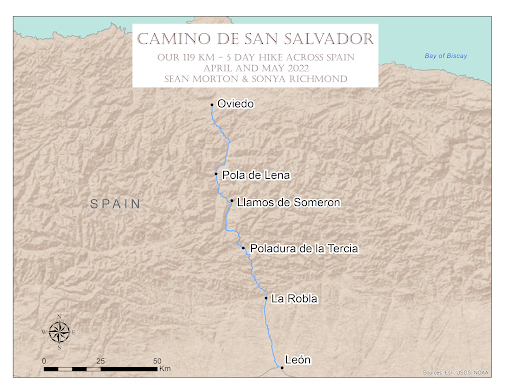Welcome to Our Blog - Camino San Salvador

Welcome to our Camino San Salvador Blog! Over the span of 5 days in April and May, 2022 we completed this 119 km pilgrimage route from Leon to Oviedo, Spain. This wild, mountainous, stunningly beautiful walk was unlike any of the caminos we've previously hiked, and we thoroughly enjoyed it. We completed the trail after walking the Camino Madrid and spending two days on the Camino Frances, and before walking the Camino Primitivo from Oviedo to Santiago de Compostela. Thank you for reading, and 'Buen Camino'! About the Camino San Salvador Camino San Salvador, Leon to La Robla Unseen Blessings in the Cathedral of Nature, La Robla to Poladura de la Tercia Tale of Two Trails (and Heartbreak), Poladura de la Tercia to LLanos de Someron Rumour, Expectations and Reality, Llanos de Someron to Pola de Lena Accepting the Way, Pola de Lena to Oviedo Exploring and Birding Oveido If you enjoyed our Camino San Salvador blog, you might also like reading about our walk
.JPG)
.JPG)